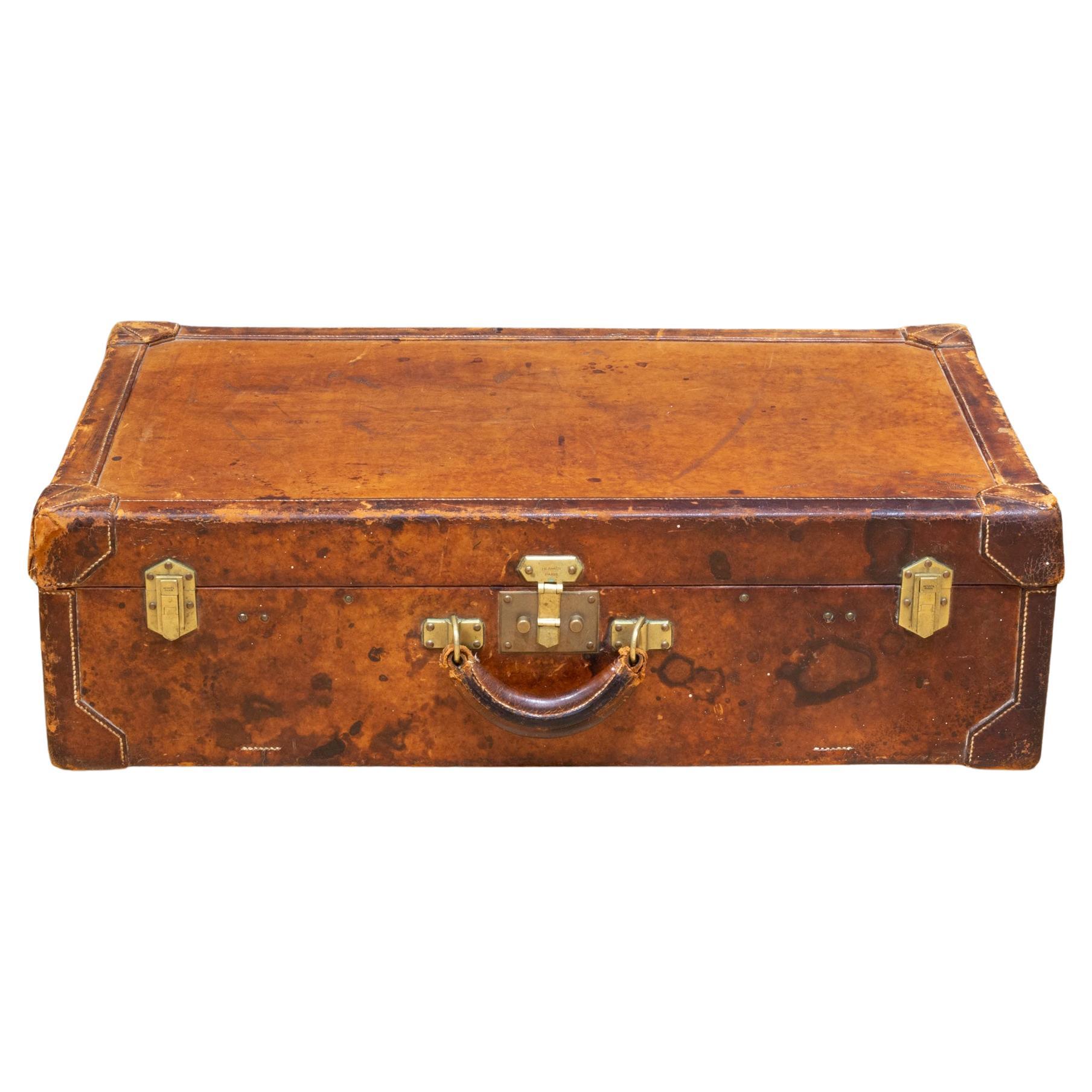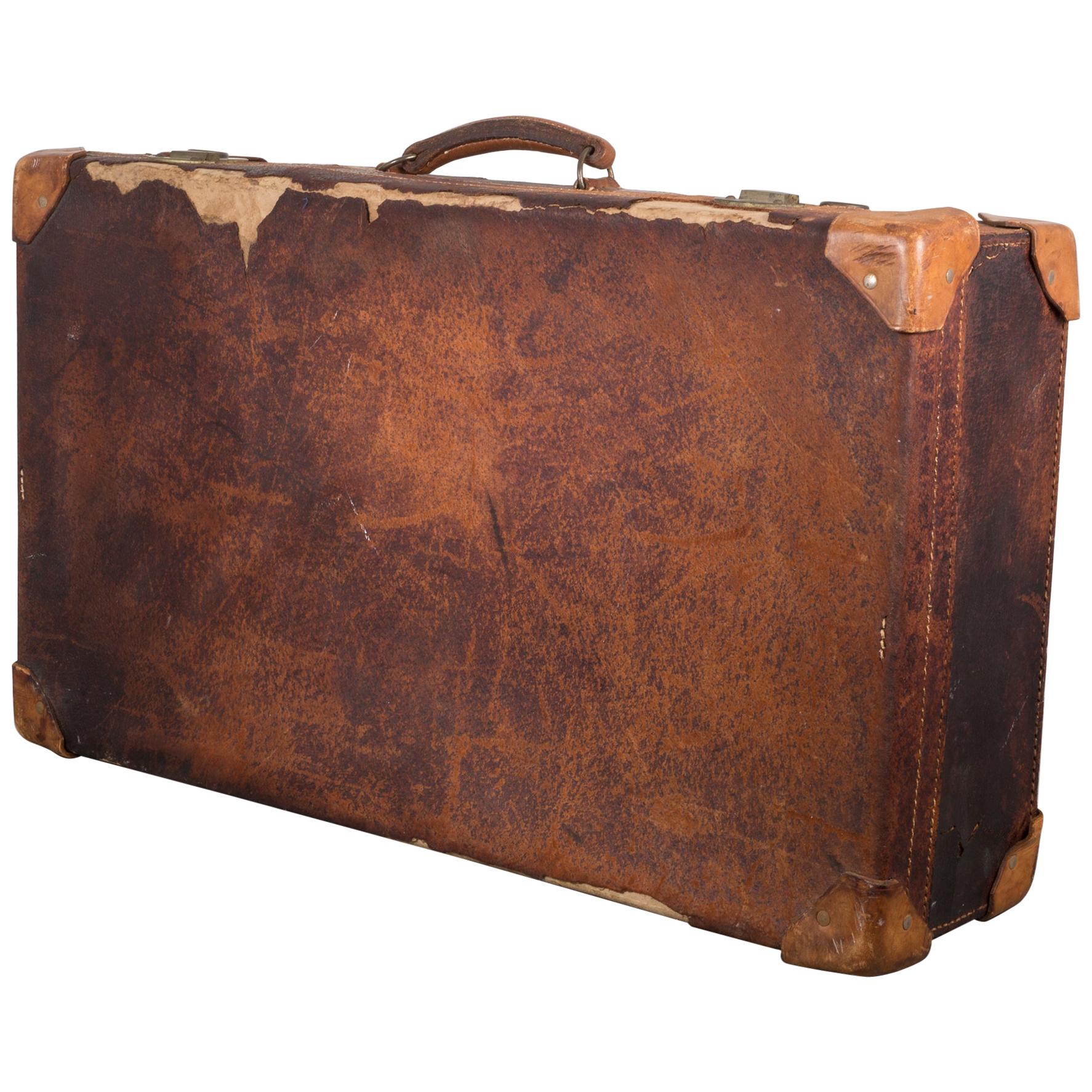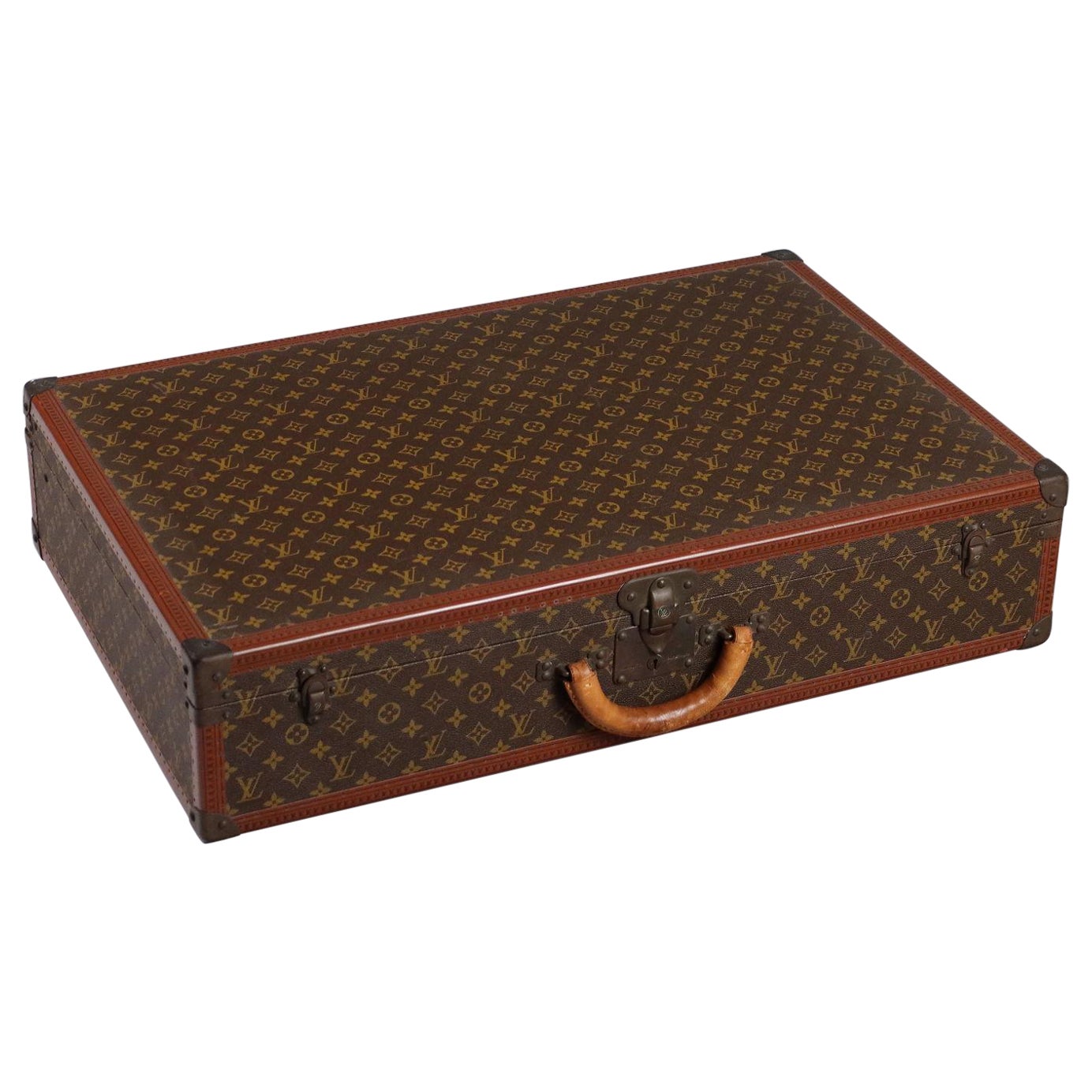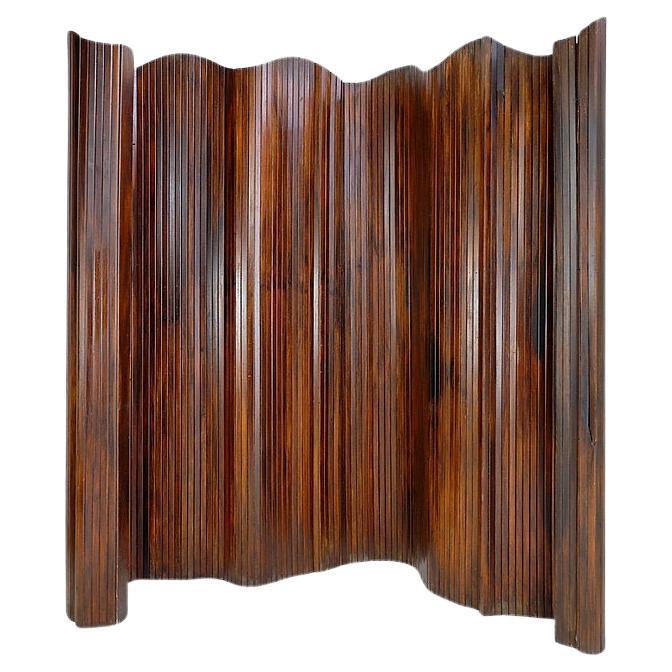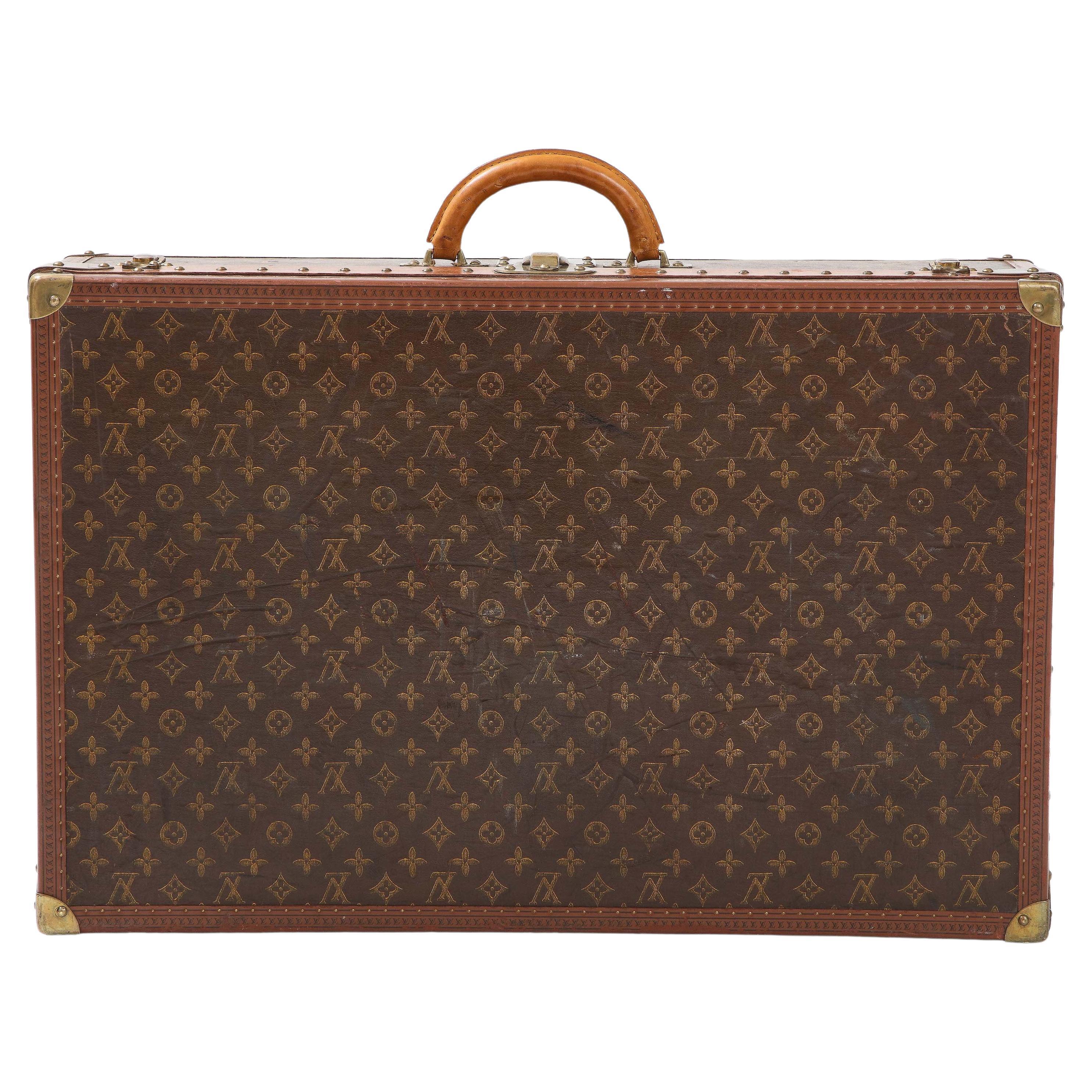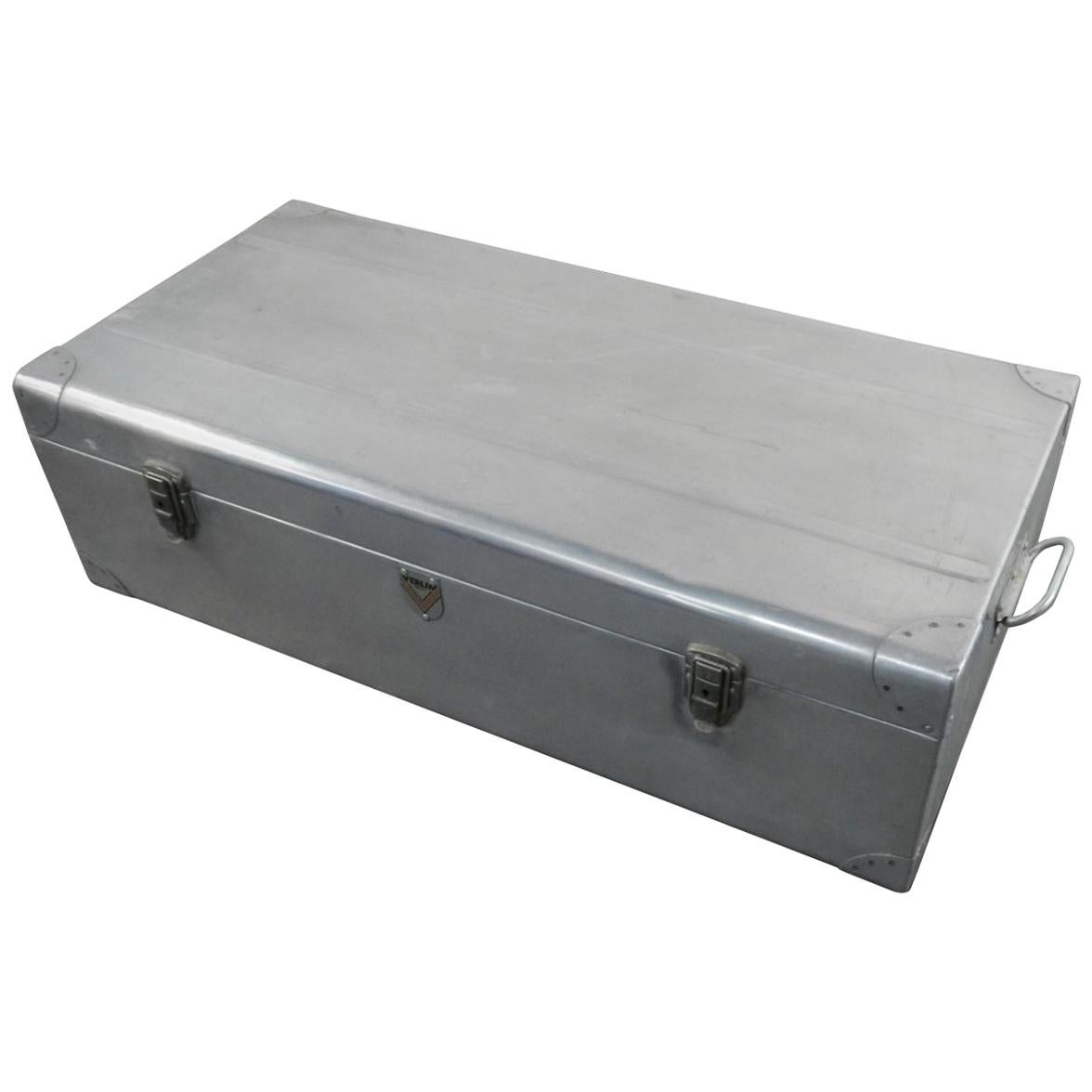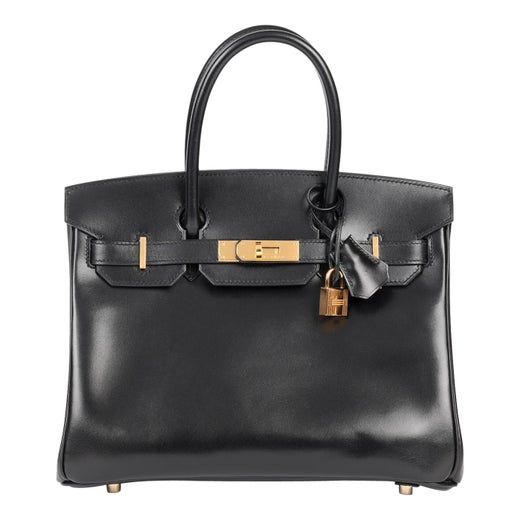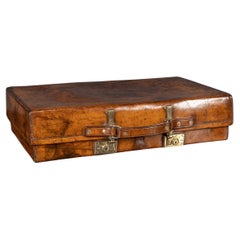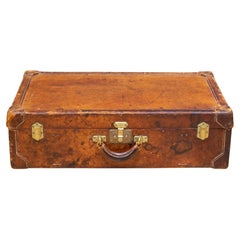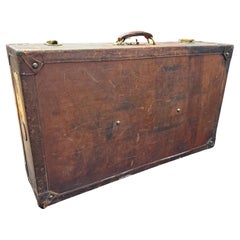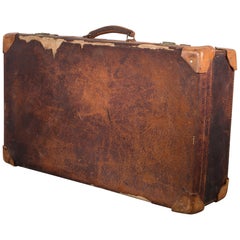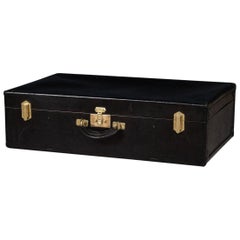
Hermès Suitcase in Black Leatherette, Paris, circa 1940
View Similar Items
Hermès Suitcase in Black Leatherette, Paris, circa 1940
About the Item
- Creator:Hermès (Manufacturer)
- Dimensions:Height: 9.06 in (23 cm)Width: 31.5 in (80 cm)Depth: 19.69 in (50 cm)
- Materials and Techniques:
- Place of Origin:
- Period:
- Date of Manufacture:circa 1940
- Condition:In Great Condition - Some scuff marks.
- Seller Location:Royal Tunbridge Wells, GB
- Reference Number:Seller: B62381stDibs: LU1348218991882
Hermès
For Hermès, what began as a maker of leather equestrian goods for European noblemen would eventually grow into one of the most storied fashion labels in the world. In 1837, German-born French entrepreneur Thierry Hermès opened a saddle and harness purveyor in Paris. Gradually, the house extended into accessories and luggage for its riders, and today, in paying homage to its origins, the family-run luxury brand resurfaces horse motifs in everything from clothing and modernist jewelry to pillows and handbags.
The first top-handled bag ever produced by Hermès was the Haut à courroies, which made its debut in 1892. A tall bag secured with a folded leather flap (fastened with bridle-inspired straps), it was designed to transport riding boots and a harness. As the world made the switch from horse to automobile, the bag adapted, becoming a multifunctional travel satchel instead of a designated saddlebag. Today, 120 years later, the HAC remains in Hermès’s line — and its distinctive flap and clasping straps have laid the groundwork for some of the house’s other iconic bags.
In the 1930s, Robert Dumas (son-in-law to Émile-Maurice Hermès, Thierry’s grandson) designed a smaller, trapezoidal take on the flap bag with a handle and two side straps. Later, actress Grace Kelly, then engaged to Prince Rainier of Monaco, is said to have used one of these bags to conceal her pregnancy during the 1950s. Because she was photographed constantly, the coverage catapulted her handbag to international popularity. In 1977, Hermès officially renamed the model for her, and the Kelly bag was born. Each Kelly bag takes between 18 and 25 hours to produce, and its 680 hand stitches owe solely to one Hermès artisan.
Robert Dumas was also responsible for another one of the brand’s most iconic offerings: the launch of its first silk scarf on the occasion of Hermès’s 100th anniversary in 1937. Based on a woodblock designed by Dumas and printed on Chinese silk, the accessory was an immediate hit.
Today, vintage Hermès scarves, typically adorned in rich colors and elaborate patterns, serve many functions, just as they did back then. Well-heeled women wear it on their heads, around their necks and, in a genius piece of cross-promotion, tied to the straps of their Hermès bags. Kelly even once used one as a sling for her broken arm.
In 1981, Robert Dumas’s son Jean-Louis Dumas, then Hermès chairman, found himself sitting next to French actress and musician Jane Birkin on a plane, where she was complaining about finding a suitable carryall for the necessary accoutrements of motherhood. After the two travelers were properly introduced, Birkin helped design Jean-Louis’s most famous contribution to the Hermès canon: the Birkin bag, a roomy, square catchall with the HAC’s trademark leather flap top and the addition of a lock and key. Owing to the brand’s legendary commitment to deft, handcrafted construction, the Birkin is an investment that is coveted by collectors everywhere.
While the Kelly and Birkin may be standouts, gracing the arms of everyone from royal heiresses to hip-hop stars in the past few decades, the handbags are but a small part of Hermès’s fashion offerings. Since the 1920s, the brand has produced some of the most desirable leather goods in the world. There’s the Constance bag, a favorite of Jacqueline Kennedy, the recently relaunched 1970s-era Evelyne and, on the vintage market, a slew of designs dating back to the 1920s.
Good design never goes out of style. Find a variety of vintage Hermès handbags, day dresses, shoes and more on 1stDibs.
- 20th Century Louis Vuitton Suitcase In Monogram Canvas, France c.1970By Louis VuittonLocated in Royal Tunbridge Wells, KentA delightful mid to late 20th-century Louis Vuitton hard-sided case, covered with the iconic monogram canvas and complemented by brass fittings. The exterior exudes the unmistakable ...Category
Vintage 1970s French Other Trunks and Luggage
MaterialsLeather, Canvas
- 20th Century Louis Vuitton Suitcase In Natural Cow Hide, France c.1910By Louis VuittonLocated in Royal Tunbridge Wells, KentA highly unusual and exceptionally rare Louis Vuitton suitcase, originating from the early years of the 20th century, distinguishes itself not with the globally renowned monogram canvas but with a distinctive covering crafted from a singular piece of cowhide. This unique piece represents a special order from Louis Vuitton, showcasing the brand's historical commitment to utilising only the finest hides available. Unlike many of its counterparts, leather trunks and cases of this era often struggle to withstand the test of time, requiring regular treatments to prevent drying and disintegration. Remarkably, this particular example defies the odds, retaining the same supple quality it possessed on the day it first graced the shop floor. This suitcase belongs to Louis Vuitton's collection of "speciality materials," which encompasses a diverse range, including, but not limited to, zinc, copper, crocodile leather, and cow leather. A brief history about Louis Vuitton trunks: Louis Vuitton was born in 1821 to a farmer and milliner and came from a long-established working-class family in eastern France. Vuitton grew up understanding the effects of perseverance and a strong work ethic from watching his family. At the age of 16, he made the decision to walk 292 miles from his hometown to Paris to try and make a new life for himself. When he arrived the city was in the midst of industrialization with current modes of transportation evolving quickly allowing for longer journeys. With this came the need for sturdy travel pieces. Vuitton was taken as an apprentice for a successful box maker and packer named Monsieur Marechal. He learned to craft durable containers and how to pack them properly – a well-respected profession at the time.In 1854, years after he had mastered his craft and became well respected for it, Vuitton ventured out on his own to open a shop on Rue Neuve des Capucines. It was here that he began to establish himself as a luggage maker. Then, in 1858, Vuitton designed the first Louis Vuitton steamer trunk. At the time trunks had rounded tops to allow for water to run off but this did not allow for convenient stowage. Vuitton introduced a flat, yet waterproof, trunk that was easily stackable. The first of his trunks were outfitted with a grey canvas referred to as Trianon – it wouldn’t be until several decades later that the signature monogram would be introduced. With a burgeoning business, Vuitton moved his family and workplace to Asniere, where he employed twenty workers to craft his trunks. By 1900 he would have 100 employees, and in 1914 the company would more than double in size. After years of success, Vuitton began to experiment with the design of his luggage by introducing a new striped canvas pattern (1876) and later the still well-known Damier print (1888). The hand-painted patterns were developed to prevent counterfeits. Even in the late 1800s, Louis Vuitton was enough of a status symbol to warrant counterfeiting. In 1886, his son George invented and patented an ingenious locking system that made it impossible to pick the lock of their trunks. This lock is still used today. 1892 would prove to be a time of mourning for the family as Louis Vuitton passed...Category
20th Century French Other Trunks and Luggage
MaterialsBrass
- 20th Century Revelation Expanding Leather Suitcase, c.1920Located in Royal Tunbridge Wells, KentAntique early 20th Century Bridle Hide Revelation expanding leather suitcase, a hallmark of innovation from the 1920's, showcased a pioneering design that allowed for adjustable stor...Category
20th Century British Trunks and Luggage
MaterialsBrass
- 20th Century British Made Bridle Leather Suitcase, c.1910Located in Royal Tunbridge Wells, KentAntique early 20th Century British made Bridle hide covered suitcase. The leather shows wear but is still supple, mounted with brass fittings, oozing charm and elegance. A truly grea...Category
20th Century British Trunks and Luggage
MaterialsLeather
- 20th Century British Made Bridle Leather Suitcase, c.1910Located in Royal Tunbridge Wells, KentAntique early 20th Century British made Bridle hide covered suitcase. The leather shows wear but is still supple, mounted with brass fittings, oozing charm and elegance. A truly grea...Category
20th Century British Trunks and Luggage
MaterialsLeather
- 20th Century Louis Vuitton Cow Hide Suitcase, France c.1920By Louis VuittonLocated in Royal Tunbridge Wells, KentA highly unusual and exceptionally rare Louis Vuitton suitcase, originating from the early years of the 20th century, distinguishes itself not with the globally renowned monogram canvas but with a distinctive covering crafted from a singular piece of cowhide. This unique piece represents a special order from Louis Vuitton, showcasing the brand's historical commitment to utilizing only the finest hides available. Unlike many of its counterparts, leather trunks and cases of this era often struggle to withstand the test of time, requiring regular treatments to prevent drying and disintegration. Remarkably, this particular example defies the odds, retaining the same supple quality it possessed on the day it first graced the shop floor. This suitcase belongs to Louis Vuitton's collection of "speciality materials," which encompasses a diverse range, including, but not limited to, zinc, copper, crocodile leather, and cow leather. A brief history about Louis Vuitton trunks: Louis Vuitton was born in 1821 to a farmer and milliner and came from a long-established working-class family in eastern France. Vuitton grew up understanding the effects of perseverance and a strong work ethic from watching his family. At the age of 16, he made the decision to walk 292 miles from his hometown to Paris to try and make a new life for himself. When he arrived the city was in the midst of industrialization with current modes of transportation evolving quickly allowing for longer journeys. With this came the need for sturdy travel pieces. Vuitton was taken as an apprentice for a successful box maker and packer named Monsieur Marechal. He learned to craft durable containers and how to pack them properly – a well-respected profession at the time.In 1854, years after he had mastered his craft and became well respected for it, Vuitton ventured out on his own to open a shop on Rue Neuve des Capucines. It was here that he began to establish himself as a luggage maker. Then, in 1858, Vuitton designed the first Louis Vuitton steamer trunk. At the time trunks had rounded tops to allow for water to run off but this did not allow for convenient stowage. Vuitton introduced a flat, yet waterproof, trunk that was easily stackable. The first of his trunks were outfitted with a grey canvas referred to as Trianon – it wouldn’t be until several decades later that the signature monogram would be introduced. With a burgeoning business, Vuitton moved his family and workplace to Asniere, where he employed twenty workers to craft his trunks. By 1900 he would have 100 employees, and in 1914 the company would more than double in size. After years of success, Vuitton began to experiment with the design of his luggage by introducing a new striped canvas pattern (1876) and later the still well-known Damier print (1888). The hand-painted patterns were developed to prevent counterfeits. Even in the late 1800s, Louis Vuitton was enough of a status symbol to warrant counterfeiting. In 1886, his son George invented and patented an ingenious locking system that made it impossible to pick the lock of their trunks. This lock is still used today. 1892 would prove to be a time of mourning for the family as Louis Vuitton passed...Category
20th Century French Other Trunks and Luggage
MaterialsBrass
- Hermes Paris Leather Suitcase c.1930By HermèsLocated in San Francisco, CAABOUT An original leather suitcase by Hermès with brass locks, cotton interior and leather straps. Original leather handle and leather name tag. Locks are stamped "Hermes Paris". Fi...Category
Early 20th Century American Trunks and Luggage
MaterialsBrass
$4,995 Sale Price22% Off - Rare Vintage HERMES Leather SuitcaseBy HermèsLocated in Victoria, BCHere is a beautiful and Rare Vintage Hermes Leather Suitcase. This handsome piece of luggage is in overall good condition for its age with wear...Category
Vintage 1930s French Trunks and Luggage
MaterialsLeather
- Distressed Leather Suitcase with Brass Locks, circa 1940Located in San Francisco, CAAbout A distressed leather suitcase with leather handle, fabric interior and brass locks. Key is missing. Creator: Unknown. Date of manufacture: circa 1940. Materials and technique...Category
Early 20th Century Industrial Trunks and Luggage
MaterialsBrass
$95 Sale Price56% Off - Vintage Leather Suitcase "La Bagagerie Paris" Burgundy Bordeaux LuggageBy Hermès, Must De CartierLocated in North Hollywood, CAVintage leather suitcase "La Bagagerie Paris" burgundy bordeaux luggage. Maroon leather travel bag with zip around and gold-tone hardware sui...Category
Mid-20th Century French Mid-Century Modern Trunks and Luggage
MaterialsLeather
- Louis Vuitton Suitcase Bisten 80 Paris 1970sBy Louis VuittonLocated in Milano, ITLouis Vuitton model Bisten 80 hard suitcase in the iconic monogram canvas, dating from the 1970s. The interior is lined and the handles rounded with leather; the corners are brass an...Category
Vintage 1970s French Mid-Century Modern Trunks and Luggage
MaterialsBrass
- Art Deco Black Alligator SuitcaseBy America Pedro P. Diaz 1Located in Westport, CTArt Deco black alligator suitcase with original satin lining and straps. Chrome hardware and original label. America Pedro P Diaz Arequipa De Peru.Category
Early 20th Century Peruvian Art Deco Trunks and Luggage
MaterialsAnimal Skin, Fabric, Scrap Wood
Recently Viewed
View AllRead More
The Hermès Passe-Guide Bag Might Not Be as Well Known as the Birkin or Kelly, But It’s Every Bit as Chic
Find out why this under-the-radar piece is so exceptional.
How to Spot a Fake Hermès Birkin Bag
The iconic Birkin bag is much coveted — and often copied. Find out how to tell the real deal from a convincing fake. Of course, you don't have to worry about this on 1stDibs, where every seller is highly vetted.
